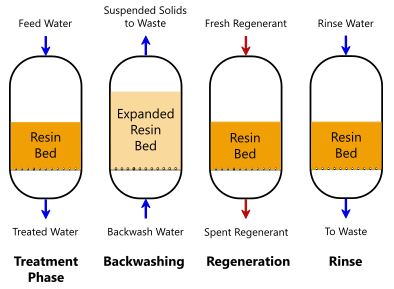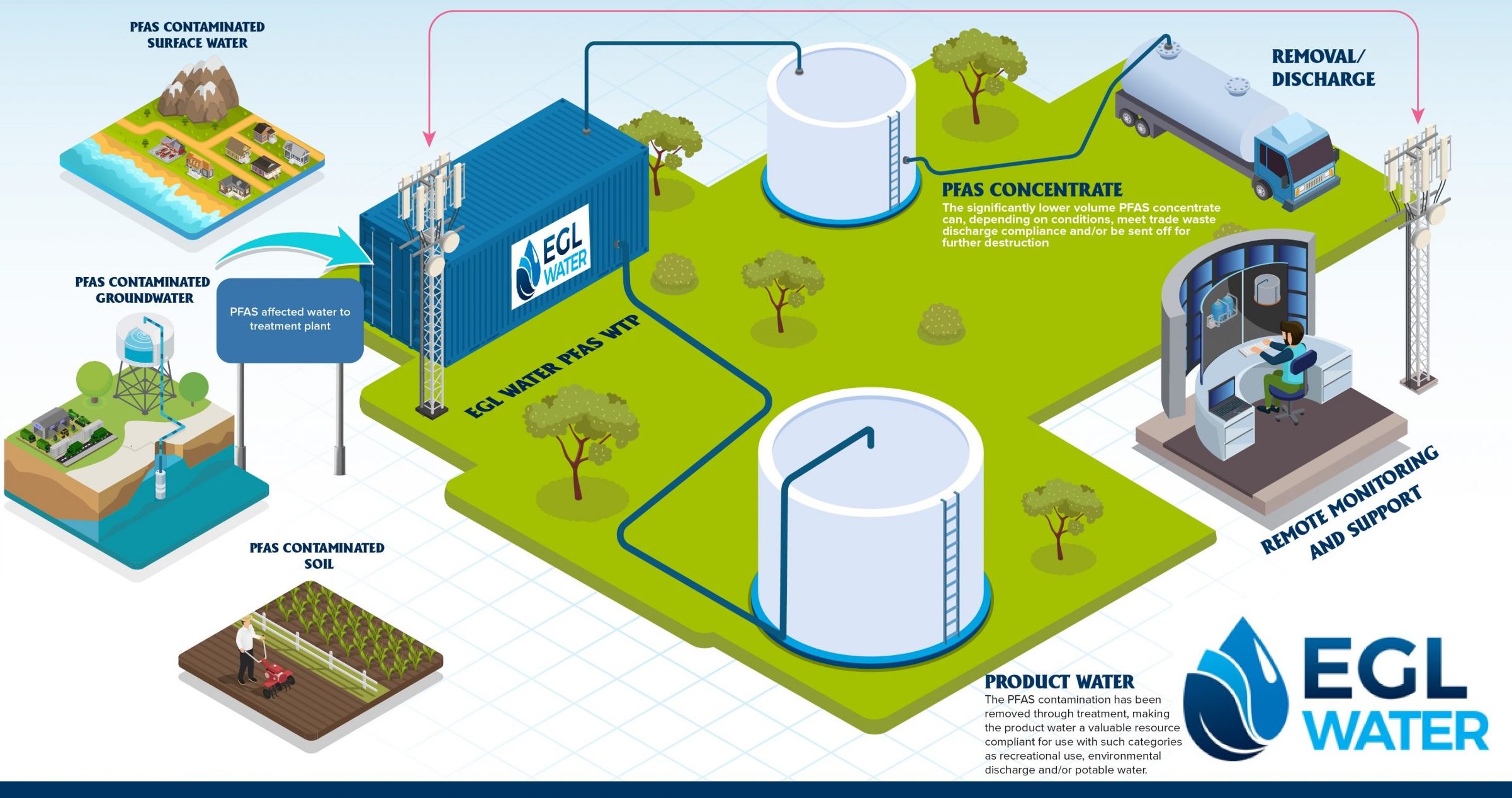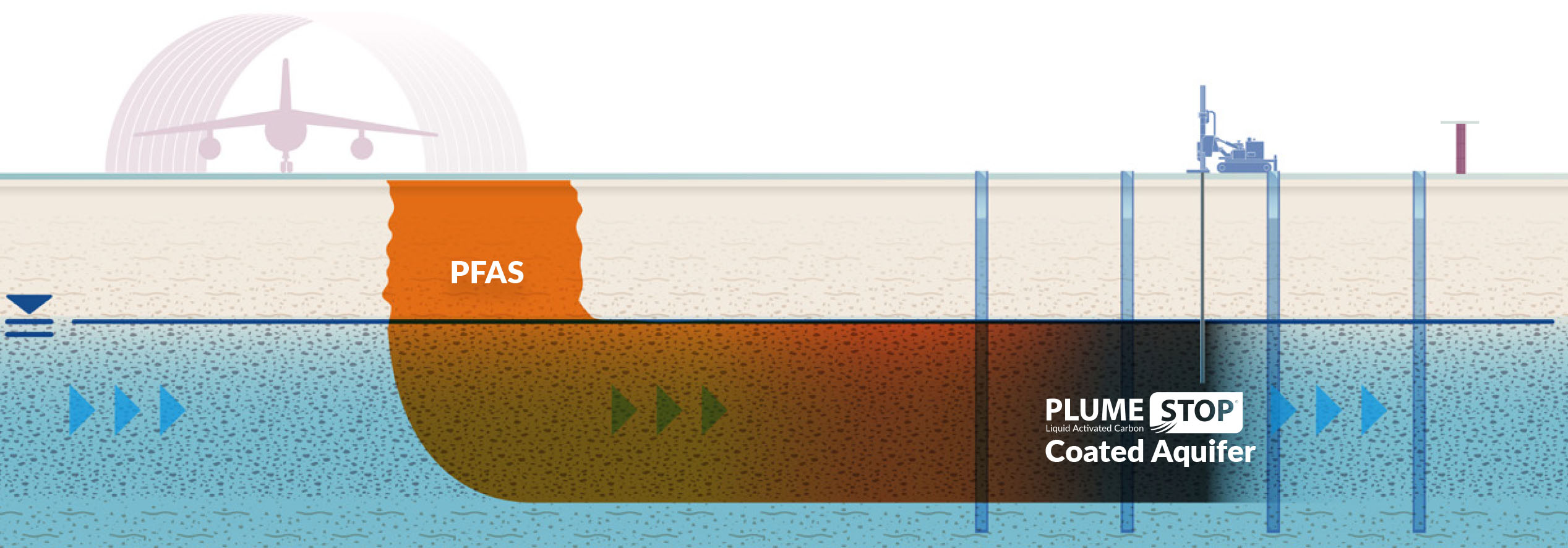Just How PFAS Therapy Guarantees Clean and Lasting Water
The existence of PFAS, typically understood as "permanently chemicals," positions considerable challenges to water quality and public health. The implications of these therapies expand past instant health and wellness benefits; they raise crucial questions about lasting water monitoring methods that need to be dealt with to guarantee a resilient future.

Recognizing PFAS Contamination
PFAS, or per- and polyfluoroalkyl compounds, have actually arised as a significant environmental concern due to their extensive occurrence and perseverance in the setting. These artificial chemicals have actually been made use of in numerous commercial applications and consumer products, including non-stick pots and pans, water resistant apparel, and food product packaging, as a result of their unique homes such as water and grease resistance.
The contamination of soil and water sources by PFAS happens mainly with commercial discharges, firefighting foam usage, and leaching from landfills. pfas management. Once released, these substances are immune to destruction, leading to their buildup in the setting. This determination increases important concerns, as PFAS can take a trip fars away with groundwater and surface water systems, impacting drinking water supplies and ecosystems

Wellness Threats of PFAS
The persistence of PFAS in the setting elevates substantial wellness worries for individuals exposed to these materials. Study has actually linked PFAS exposure to numerous unfavorable health results, including immune system disorder, liver damages, and enhanced threat of certain cancers cells.
The ubiquity of PFAS in consumer items, such as non-stick pots and pans, water-repellent textiles, and food packaging, more magnifies the risk of direct exposure. Drinking water polluted with PFAS is a significant problem, as these chemicals can leach right into groundwater resources. Susceptible populaces, including youngsters and those living near industrial websites, may deal with intense risks as a result of their developing systems and prospective for greater direct exposure levels.
As awareness of these wellness threats remains to expand, regulatory firms are beginning to establish guidelines for PFAS degrees in alcohol consumption water. Public health efforts are necessary to reduce direct exposure and shield communities from the long-term impacts of these harmful materials.

Ingenious Therapy Technologies
Exactly how can we effectively deal with the obstacles positioned by PFAS contamination in water resources? Innovative therapy technologies are arising as crucial options in the quest for clean water. These approaches concentrate on the elimination or devastation of per- and polyfluoroalkyl substances (PFAS), which are helpful site well-known for their persistence in the atmosphere.
One encouraging method is adsorption utilizing innovative materials, such as triggered carbon and ion exchange materials. These products have shown effectiveness in capturing PFAS molecules from water. One more significant technology is membrane layer filtering, which makes use of nanofiltration and reverse osmosis to different contaminants at the molecular degree, hence supplying an obstacle versus PFAS.
Additionally, advanced oxidation processes (AOPs) utilize solid oxidants to damage down PFAS substances right into harmless byproducts. This method is especially efficient for dealing with very infected water resources. Bioremediation strategies, using specific microorganisms, are also being explored to deteriorate PFAS.
As research study continues, hybrid systems that integrate several innovations may use improved efficiency, resolving the intricacies of PFAS contamination. The growth and application of these ingenious treatment innovations are necessary actions towards making sure the safety and security and sustainability of our water sources.
Advantages of Reliable PFAS Therapy
Efficiently treating PFAS contamination in water resources substantially improves public health and environmental safety. PFAS, usually described as "forever chemicals," are immune to deterioration and can build up in the human body, leading to significant health and wellness risks such as cancer cells, liver damage, and body immune system dysfunction. By implementing reliable therapy techniques, communities can lower direct exposure to these hazardous substances, inevitably boosting the health outcomes of their populaces.
Additionally, successful PFAS therapy adds to the conservation of regional communities. Infected water can detrimentally impact aquatic life and disrupt the fragile equilibrium of regional habitats. By ensuring tidy water, treatment processes shield biodiversity and preserve environmental integrity.
Furthermore, reliable PFAS removal can foster public self-confidence in water quality. When areas are guaranteed that their drinking water is devoid of unsafe contaminants, it advertises a feeling of safety and wellness. This trust is necessary for neighborhood engagement and assistance for recurring water management efforts.
Future of Water Sustainability
Amidst expanding concerns regarding water top quality and shortage, the future of water sustainability rests on cutting-edge methods and collective initiatives. As communities deal with the impending risks of contaminants like PFAS, the development of sophisticated treatment innovations is vital. These modern technologies not only concentrate on the removal of dangerous materials but also promote the reuse and recycling of water, thus minimizing total need.
Moreover, effective water governance plays a critical role in guaranteeing lasting methods. Policymakers have to integrate scientific research with regulatory structures to establish clear guidelines for water use and therapy. Stakeholder why not try this out engagement, consisting of local areas and industries, promotes a feeling of shared duty and motivates lasting techniques across various sectors.
Financial investment in facilities is also crucial; upgrading aging systems to include contemporary filtration and filtration techniques can considerably boost water high click quality. Accepting environment-friendly innovations, such as all-natural filtering systems, can supply environmentally friendly remedies.
Eventually, the future of water sustainability exists in an alternative approach that integrates technology, policy, and area participation. By prioritizing these aspects, we can safeguard our water resources for generations ahead, making sure tidy and sustainable water for all.
Verdict
In conclusion, the efficient therapy of PFAS is crucial for ensuring clean and lasting water. Inevitably, robust PFAS therapy strategies contribute to long-term resilience in water management, promoting public count on in water quality and promoting lasting techniques.